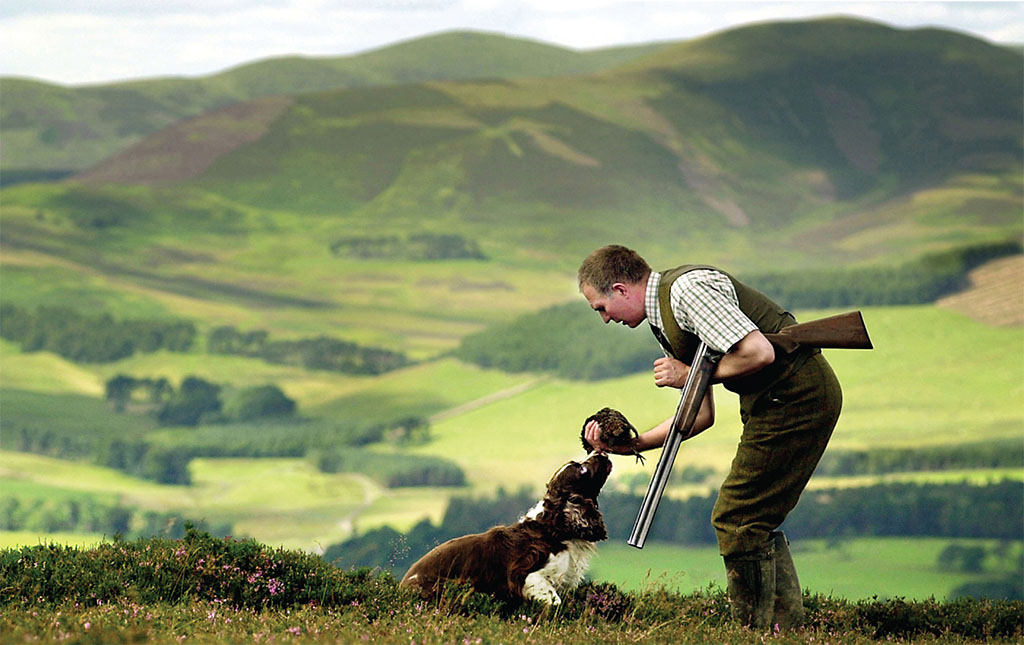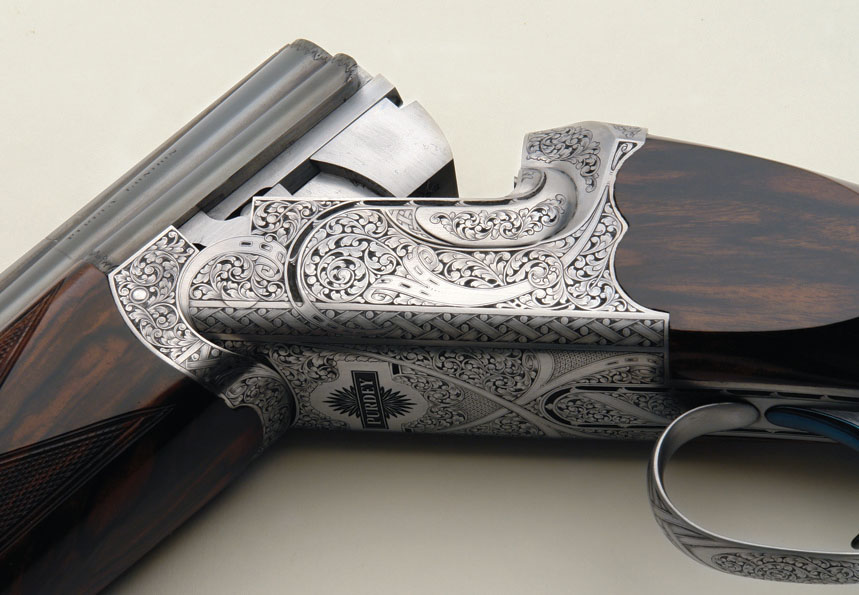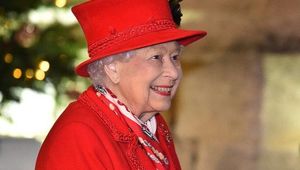
Fowl Deeds on the Glorious Twelfth
[caption id="ShootingSeason_Feature" align="aligncenter" width="1024"]

DAVID CHESKIN/PA ARCHIVE/PA IMAGES
The Glorious 12th brings the traditional opening shot in the UK game-shooting season. It might be a dark day for the birds, but it’s a glorious day for the plate.
Few dates on the British calendar resonate like August 12. An innocuous-sounding weekday that would be like any others except for its magnificent title—the Glorious 12th—it brings to mind aristocracy and sport, and the day furnishes butchers’ slabs and dinner plates throughout the kingdom.
[caption id="ShootingSeason_img1" align="alignleft" width="496"]

©MARK HICKEN/ALAMY
THE LEGAL SHOOTING OF GROUSE, ptarmigan and common snipe begins on this day, unless, however, it is a Sunday. In that case, the opening day is the following day.
Shooting is one of the triumvirate of British countryside pursuits—hunting, shooting, fishing—all of which transport the participant out into the beauty and solitude of the British countryside. You are rewarded with the thrill of the chase and a sumptuous meal of game to be shared between guests and hosts at the end. So what do the British consider as “game”? It is any animal hunted for food that is not normally domesticated. Defined in law by the Game Act 1831, still on the statute book, it is illegal to shoot game on Sundays or at night.
Other birds shot for food in the UK include red grouse, ptarmigan, grey partridge and red-legged partridge and common pheasant. Deer (venison) can also be stalked and shot. Other creatures hunted include wild duck, wild goose, woodpigeon, woodcock, snipe, rabbit and golden plover.
Shooting falls into three main categories. For those who enjoy a “wilder” shoot, there is rough shooting; for a more leisurely shoot, join a driven shoot; wildfowling, which is particularly popular in the wetlands of East Anglia, will take you to the remotest places in the roughest weather.
The 2011 grouse season started strongly and continued in the same vein throughout, with some remarkable days right through to the tail-end. Many moors enjoyed record days of catches exceeding records that had stood for decades. The main reason for these prodigious numbers of grouse is undoubtedly better management techniques allied with great keeping skills.
[caption id="ShootingSeason_img2" align="alignleft" width="234"]

There are those in the shooting fraternity who consider shooting red grouse—a species unique to Scotland and the north of England—the ultimate sporting thrill. Shooters need to have deep pockets, however: a brace (pair) of red grouse comes in at between £150 to £200. After a day’s shooting, for a typical party of eight guns, with accommodation, commissions, tips, ammunition and refreshments, you might not get much change from £50,000.
UNIQUE MOORLAND
Game shooting is the most popular form of live quarry shooting. “The moorland habitat we have in this area is unique to Britain,” said Robin Varley, a moorland gamekeeper. “We don’t have it anywhere else in the world. It is our rainforest. If we don’t look after it, if we don’t manage it, it’ll be gone.” There are only around 610 such moors in the world—450 in Scotland, 160 in England.
The British Association for Shooting and Conservation (BASC) supports shooting and claims that heather moorland is threatened globally and is rarer than rain-forest. Three quarters of the world’s heather moorland is in the UK and managed for red grouse shooting. A newstudy by the Game and Wildlife Conservation Trust (GWCT) and Conservation Grade has included key research by the GWCT that shows that newly hatched chicks of grey partridges need at least 2,000 insects a day to survive. If the right insect-rich habitats do not exist, young chicks starve to death.
JOINING A SHOOT
The image of shooting in Britain may still be crusty Edwardians at country house parties, where the squire invites guests to bring guns for a weekend. Today, the growth area of game shooting is in syndicates—groups who lease the sporting rights to various pieces of ground. These are easy to join (for a fee, of course) and can be found from the Isle of Wight to the top of Scotland.
[caption id="ShootingSeason_img3" align="aligncenter" width="859"]

WWW.PURDEY.COM
A syndicate may employ a full- or part-time gamekeeper, but many will simply share the work among themselves. At the end of a shoot, each person involved will automatically be given a brace of birds. They may also be given any additional birds that they would like, or buy themat a very modest cost—about a pound each.
Small shoots will generally distribute all the birds among shoot members and give some away to friends or landowners. Larger shoots may sell their surplus birds to a game dealer or directly to local people.
As the 2011/12 season concluded, spots were already becoming available on syndicates for the 2012/13 season. Examples include rough shooting in North Wales at £500 per gun; Somerset at £30 per bird.
If wildlife shooting has a spiritual home in the UK, though, it really has to be Scotland. One of the joys of shooting in Scotland is that private shooting parties can often rent castles, lodges and manses. An example is the Innerwick Estate, which spans more than 5,500 acres and lies halfway up the north side of Glenlyon, one of the finest Highland glens in North Perthshire, and famous for its autumn colors. October is a particularly attractive month to be on the hill. In 2011, red deerstalking was available on daily or weekly lets. One rifle per day with expectation of one stag per day cost £300.
At the same time, Bighouse, a lodge for 22, fully staffed and fully catered on the north coast of Scotland in East Sutherland, lies in a stunning position at the mouth of the River Halladale, flanked by water on three sides. Built in 1765 and a former home of the chief of the Sand-wood branch of the Clan Mackay, Bighouse Lodge offers the warmth, comfort and charm expected of a traditional Scottish Highland house; driven partridge shooting, pheasant, woodcock, wild-fowling, grouse, red and roe deer are shot. Dates are flexible and rentals do not always need to be on a weekly basis.
In the center of the country, the historic Atholl Estates comprise 123,552 acres of farmland, woodland and moorland in the heart of highland Perthshire. The estates are centered on historic Blair Castle, ancestral seat of the Dukes of Atholl, and are within a 90 minute drive of Edinburgh and Glasgow.
There are five sporting beats that provide a mixture of sporting opportunities to suit all tastes. Bookings can be arranged either for larger parties on a weekly basis, together with self-catering lodge accommodation, or on a daily basis.
At Kildermorie, in Easter Ross, with unspoilt beaches and the Black Isle, a lodge was available in 2011 for parties up to 20, offering red, Sika deer from Asia and roe deer stalking, grouse and ptarmigan from £2,000 weekly.
DRESSING THE PART
The choice of what to wear on the shoot is a mix of the traditional and practical, keeping the shooters hidden from the quarry, while keeping the shooters safe from the worst the British summer can throw at them.
On a first shoot, there is no need to break the bank with an extensive wardrobe: just essentials such as a weatherproof jacket, breeks, sturdy shoes and headgear. Country outfitters like Cordings of London, D.V. Townend & Co. in Yorkshire and Roxburghshire. Scotland-based A. Hume & Co. can supply all the clothing and accoutrements that shooters require.
With the starting gun of the season in August, British shooting fashion has grown around the assumption that most of the season is wet and cold and that muted green and blue colors help camouflage the shooters.
Appropriately, one of the products most closely rerelated to Scotland is very important in shooting: tweed. Lovat is the name given to the green used in traditional Scottish tweed, a water-resistant fabric used for outdoor wear for centuries. However, observers suggest that non-tweed jackets, called technical coats, are beginning to make inroads onto the moorlands. Schoffel, originally a ski brand, is one such brand of lighter weight jackets, offering more zips, including small pockets under the front trim to accommodate mobile phones and the like, while waxed jackets, such as Barbour, remain popular. Fleeces can be zipped inside modern technical jackets. They often include open
“handwarmer” pockets behind the cartridge pockets, which are designed to keep bare hands out of the cold.
Breeks are shooting trousers, which are short with a fastening—usually a buckle—just below the knee. Breeks are usually made from tweed, but can be bought in moleskin or corduroy. Tweed is usually a camouflage color, hard wearing and relatively quick drying. The fabric swells a little as it takes in water, helping keep the inside dry. Knee length socks are worn below the breeks—usually with tall boots—and the overhang of the breeks helps to deflect rainwater and prevent it dripping down boots.
The other essential piece of kit for any shot is good footwear: a sturdy pair of well-made Wellies. Hunter Wellies are an established brand and offer neoprene-lined models.
There are no hard and fast rules as to what to wear when you are out on a shoot, but the type of shoot you’ve been invited on is a good starting point. This is no time for false economy, or striking a note of individuality by turning out in outrageous colors or fabrics. The unpredictable weather and the need to be out of sight should determine what is worn.
Taking part in a shoot while visiting Britain adds a dimension of interaction with the British landscape and wildlife that is truly up close and personal. And tasty, too.
Gun law in the UK
Lacking second amendment protection, firearms in Britain are much more regulated and less prevalent than in the United States. However, the law allows visitors to the country to use or borrow a firearm legally.
In general, which laws cover use of firearms depends on the exact circumstances of the intended shooting. Visitors are allowed to borrow a shotgun or rifle and use it in the presence of the firearm’s registered owner on the owner’s premises without needing any form of license or certificate and use is limited to the same restrictions as those on the owner’s certificate.
Should a visitor wish to possess firearms in their own right for the duration of a visit to the UK, they will require either a Visitor’s Shotgun Permit or a Visitor’s Firearms Permit. All semi-auto centerfire firearms and modern metallic ammo pistols are prohibited weapons in the UK. Application forms for the Visitor’s Permits are available from local police forces, but it should be noted that the application must be sponsored by a UK resident.
There are many clay pigeon shoots that hire out shotguns for use on their targets with the minimum of formalities, and there are a much smaller number of rifle ranges that will hire out rifles.
[caption id="ShootingSeason_img4" align="aligncenter" width="496"]

AP










Comments